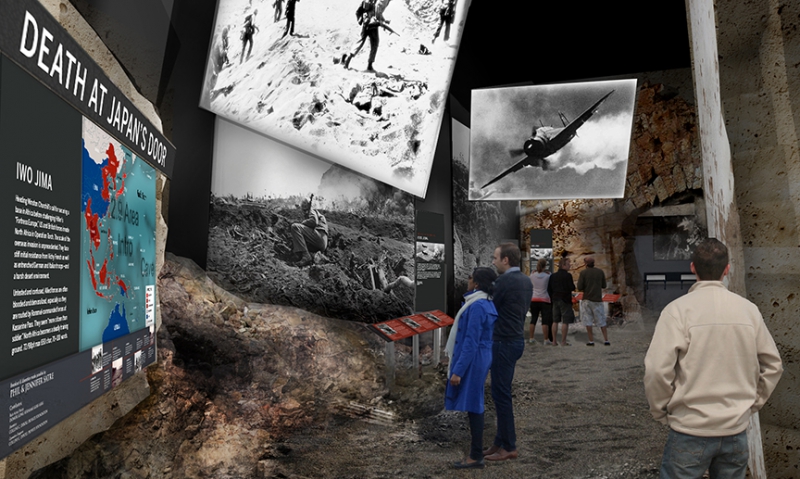
World War II Museum prepares Tokyo experience
Later this year visitors to The National World War II Museum in New Orleans will be able to take a journey through naval battles, the jungles of Guadalcanal and the air bombing campaign of World War II as part of the “Road to Tokyo: Pacific Theater Galleries.”
“Road to Tokyo” and the already open “Road to Berlin” will combine for 32,000 square feet and 19 total galleries, says Dr. Keith Huxen, senior director of history and research. Tokyo will open to the public on Dec. 12.
“It’s a very similar treatment with Road to Berlin,” Huxen said. “A couple of differences are that Berlin goes counter-clockwise, and this one goes clockwise. And we also assume that people know about Pearl Harbor so that treatment will be in another building. We can’t control where visitors begin their journey. But it is set up so that they should see the Pearl Harbor exhibit first, then come over here to Road to Tokyo, then Road to Berlin.”
Upon entering Tokyo, visitors will view a nine-monitor video wall that shows the spread of the Japanese empire and the key strategic challenges for the Allies. Exhibits will educate visitors about major events in the Pacific Theater of World War II, including the Doolittle Raiders, Battle of Coral Sea, the epic Battle of Midway, Guadalcanal and Okinawa.
“I am hoping visitors feel when they walk through all of it is a sense of awe and appreciation of what the World War II soldiers went through and achieved,” Huxen said. “It’s a tremendous war out there in the Pacific, and it’s very different than what we experienced in Europe.”
The naval battles are one of several major differences. “This (Guadalcanal exhibit) tells the story of the new naval battles using aircraft carriers and submarines to fight this war, mainly because most of our fleet is at the bottom of Pearl Harbor.”
The Guadalcanal exhibit also takes visitors into the middle of the jungle with a raised ceiling of 37 feet. The museum uses special treatments, similar to the Battle of the Bulge display in the Berlin gallery, such as cold air to set the mood for the exhibit.
“This Guadalcanal gallery is going to be a narrow pathway through the jungle, with an introductory video and lots of tall trees in a terrifying dark environment,” Huxen said. “We want to use this gallery as an experiential piece for the visitor. Hopefully we are going to scare them a little bit.”
The Tokyo gallery will not shy away from the atrocities of war.
“We’re going to tell the story of how brutal the Japanese were; the nature of the enemy,” said Huxen. “This is something very different in the Pacific War. If you were a POW of the Nazis, the Germans were actually much better in their treatment of POWs than the Japanese. That’s because the Germans were worried about how their POWs would be treated. The Japanese believed that surrender was dishonorable and it was preferable to die in battle.”
The 10th and final gallery in Tokyo is titled “Downfall,” and chronicles the air campaign that led to Japan’s surrender.
“We want to set up the context for the air campaign and the air war that we are fighting over mainland Japan,” Huxen explained. “We’ll tell the story of the incendiary bombing campaign. A lot of people don’t realize but we destroyed about 60 Japanese cities, just utter destruction from the air.”
Visitors will be able to view the bombings of Hiroshima and Nagasaki on 16-foot video screens as music plays. “It’s a very somber and reflective mood that the music will establish,” he said. “What we want people to understand is that bombings were not a singular one-off that just happened. They happened within the context of this larger air war campaign.”
The gallery tour concludes with a 2-minute silent video piece documenting the surrender ceremony in Tokyo Bay. Afterward, visitors will go through a door, then take escalators into the Berlin gallery.
“People will see a Nazi rally as they go down to the Road to Berlin exhibit,” Huxen said. “The idea is that there will be an audio track and you will go deeper and deeper into the crowd. It’s real audio from what it was like there … you will hear Rudolf Hess and then Hitler and the crowd going nuts.”
